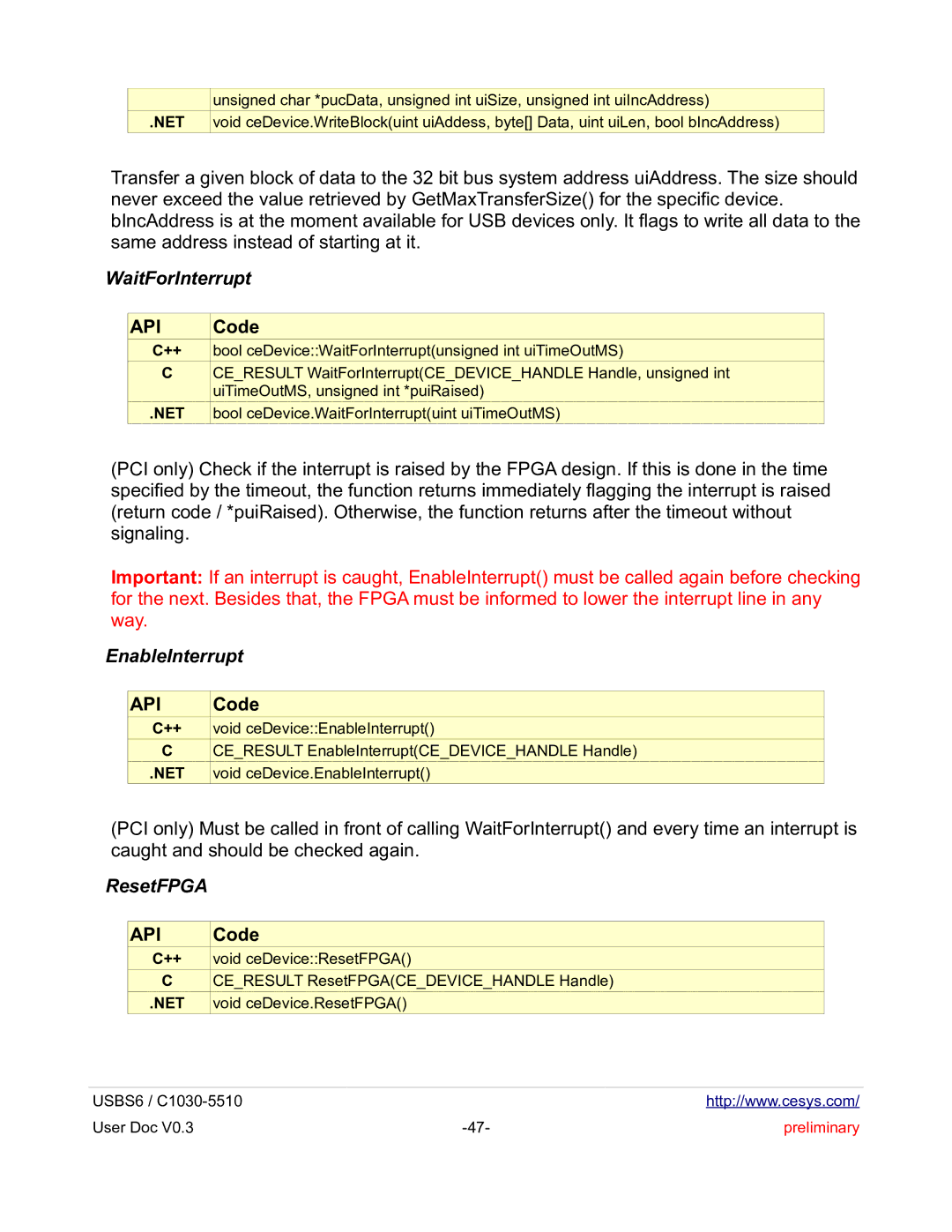
| unsigned char *pucData, unsigned int uiSize, unsigned int uiIncAddress) |
.NET | void ceDevice.WriteBlock(uint uiAddess, byte[] Data, uint uiLen, bool bIncAddress) |
Transfer a given block of data to the 32 bit bus system address uiAddress. The size should never exceed the value retrieved by GetMaxTransferSize() for the specific device. bIncAddress is at the moment available for USB devices only. It flags to write all data to the same address instead of starting at it.
WaitForInterrupt
API | Code |
C++ | bool ceDevice::WaitForInterrupt(unsigned int uiTimeOutMS) |
CCE_RESULT WaitForInterrupt(CE_DEVICE_HANDLE Handle, unsigned int uiTimeOutMS, unsigned int *puiRaised)
.NET | bool ceDevice.WaitForInterrupt(uint uiTimeOutMS) |
(PCI only) Check if the interrupt is raised by the FPGA design. If this is done in the time specified by the timeout, the function returns immediately flagging the interrupt is raised (return code / *puiRaised). Otherwise, the function returns after the timeout without signaling.
Important: If an interrupt is caught, EnableInterrupt() must be called again before checking for the next. Besides that, the FPGA must be informed to lower the interrupt line in any way.
EnableInterrupt
API | Code |
C++ | void ceDevice::EnableInterrupt() |
CCE_RESULT EnableInterrupt(CE_DEVICE_HANDLE Handle)
.NET void ceDevice.EnableInterrupt()
(PCI only) Must be called in front of calling WaitForInterrupt() and every time an interrupt is caught and should be checked again.
ResetFPGA
API | Code |
C++ | void ceDevice::ResetFPGA() |
CCE_RESULT ResetFPGA(CE_DEVICE_HANDLE Handle)
.NET void ceDevice.ResetFPGA()
USBS6 / |
| http://www.cesys.com/ |
User Doc V0.3 | preliminary |
